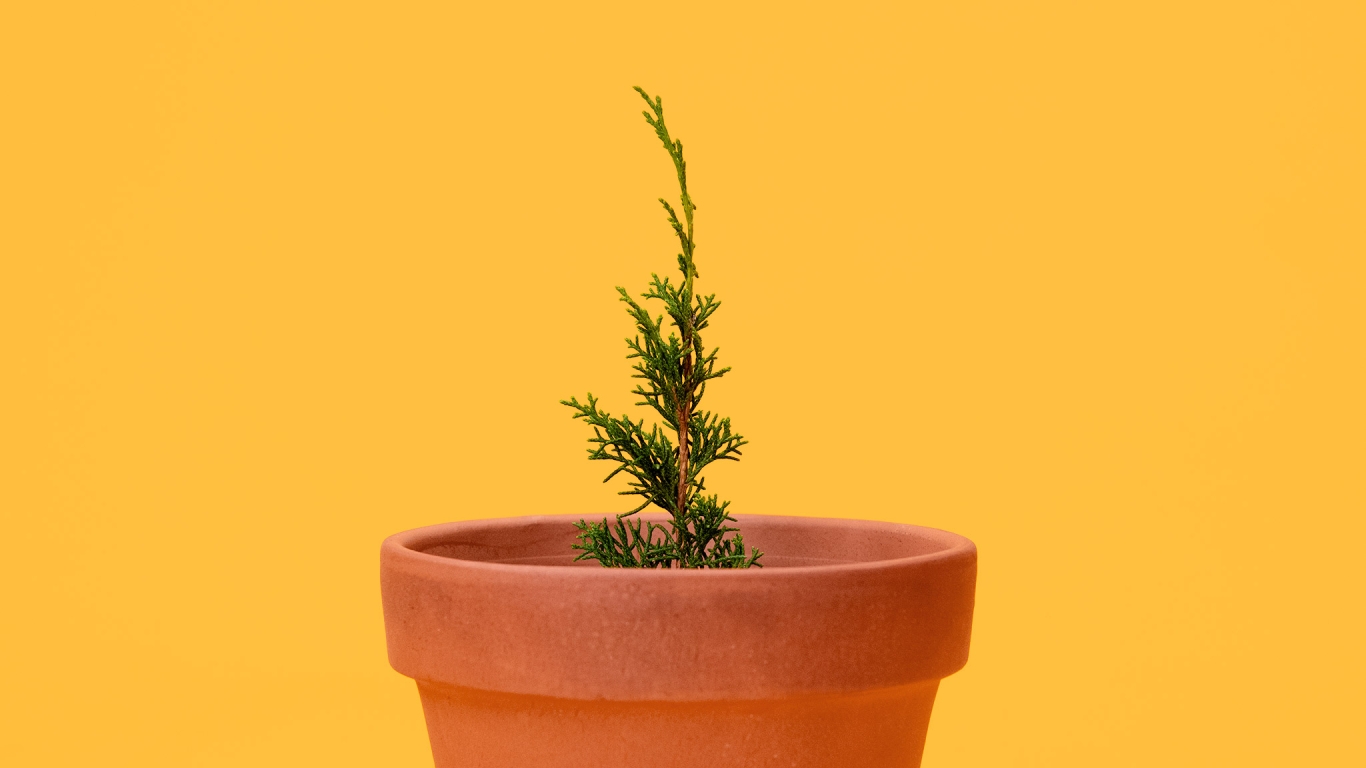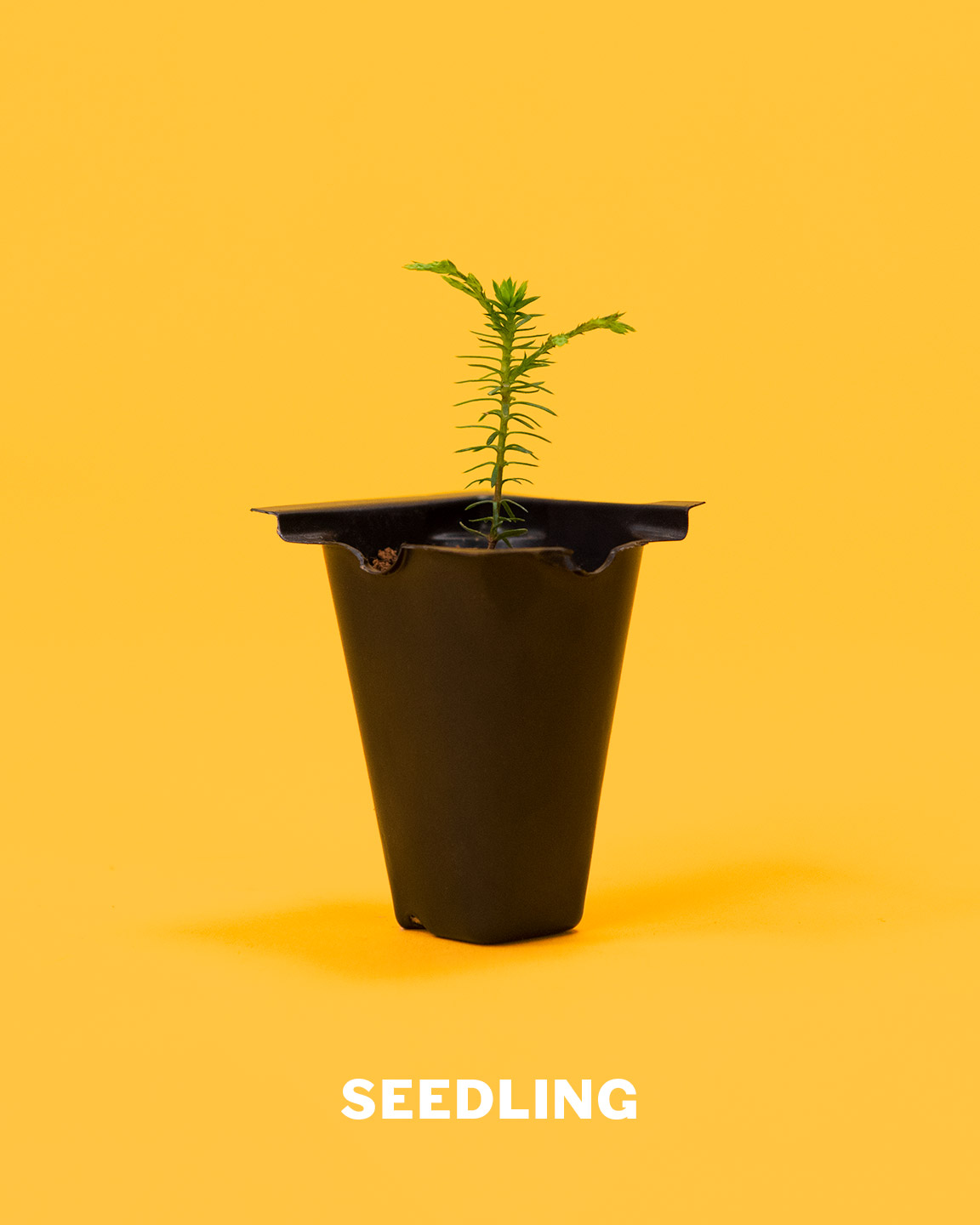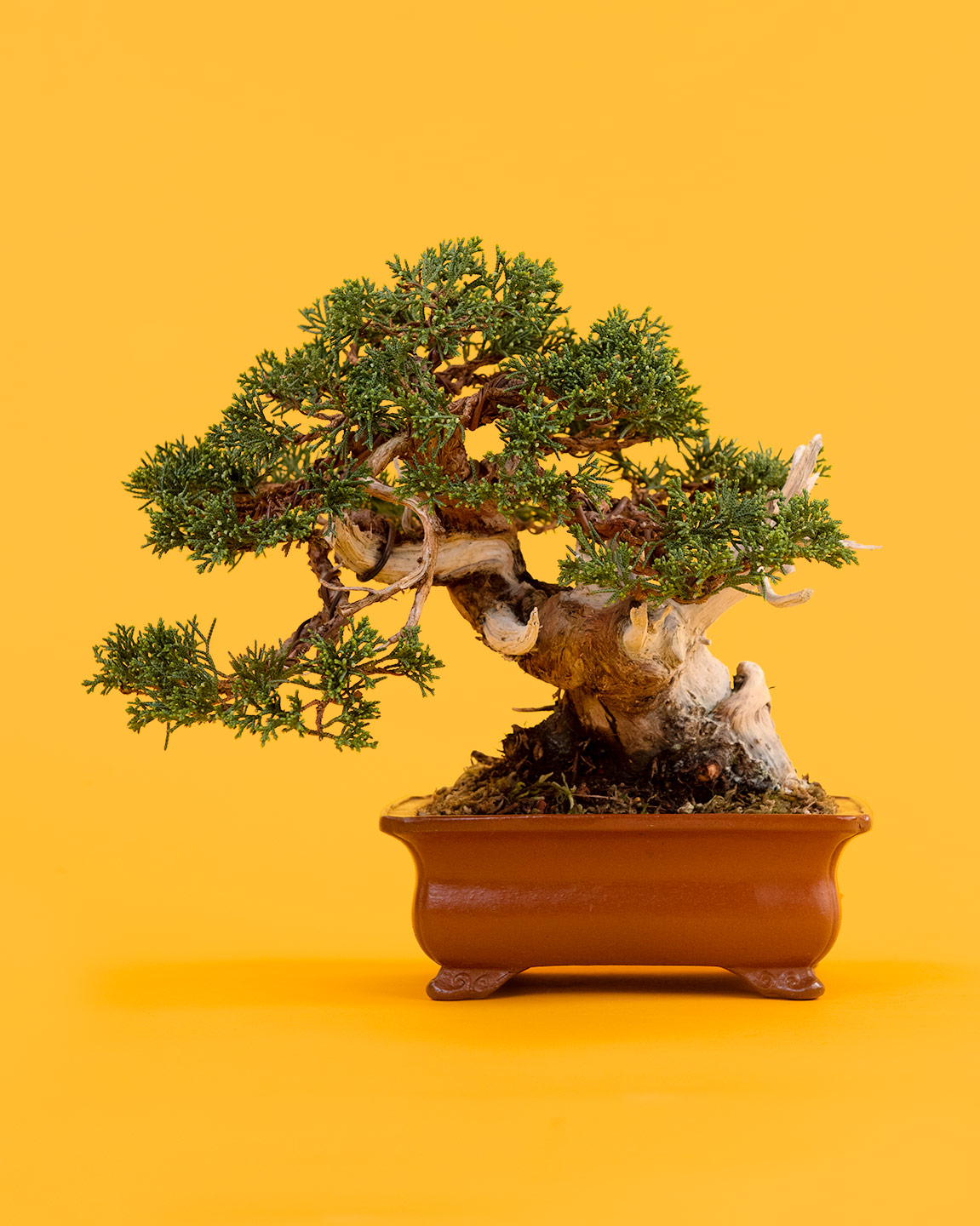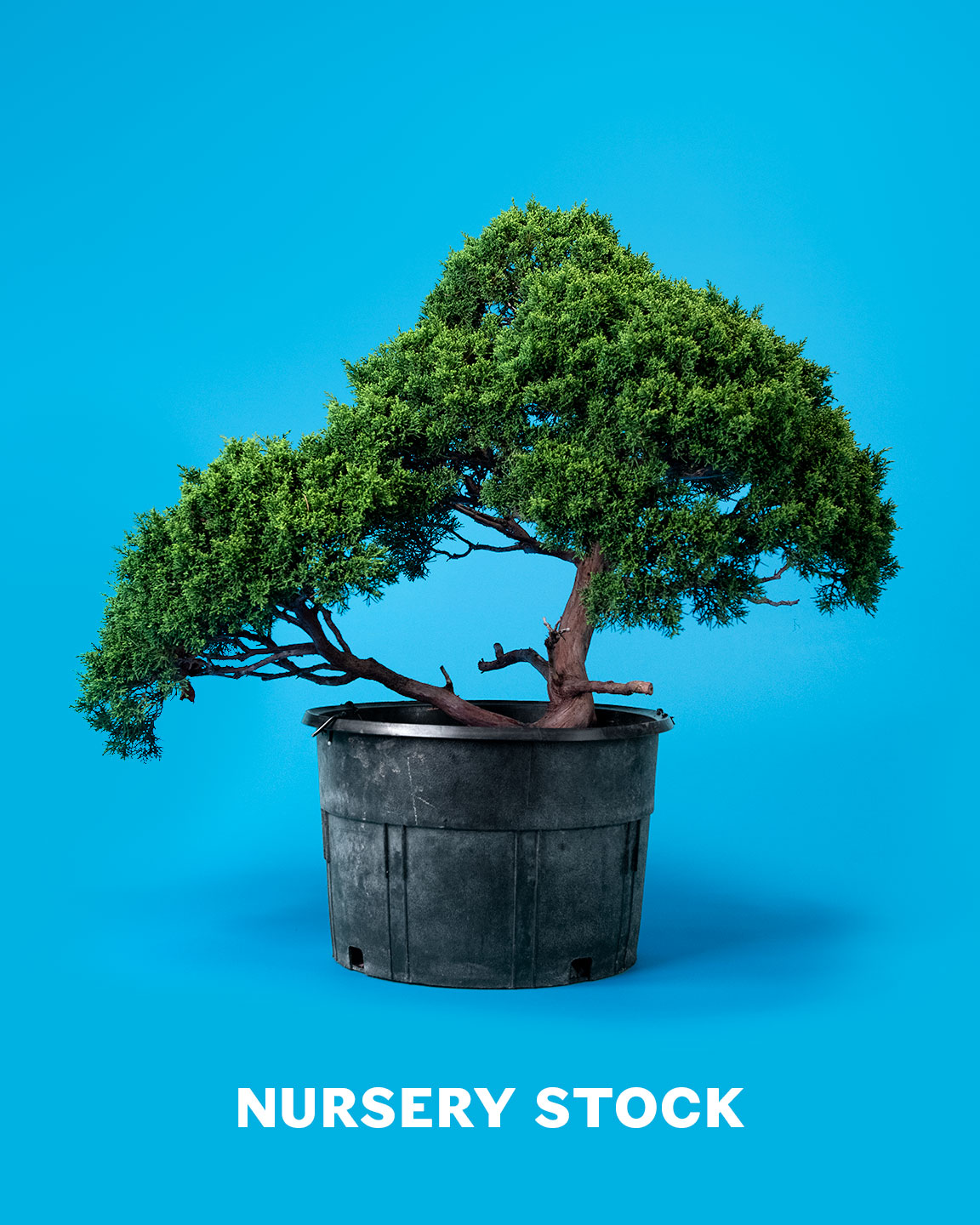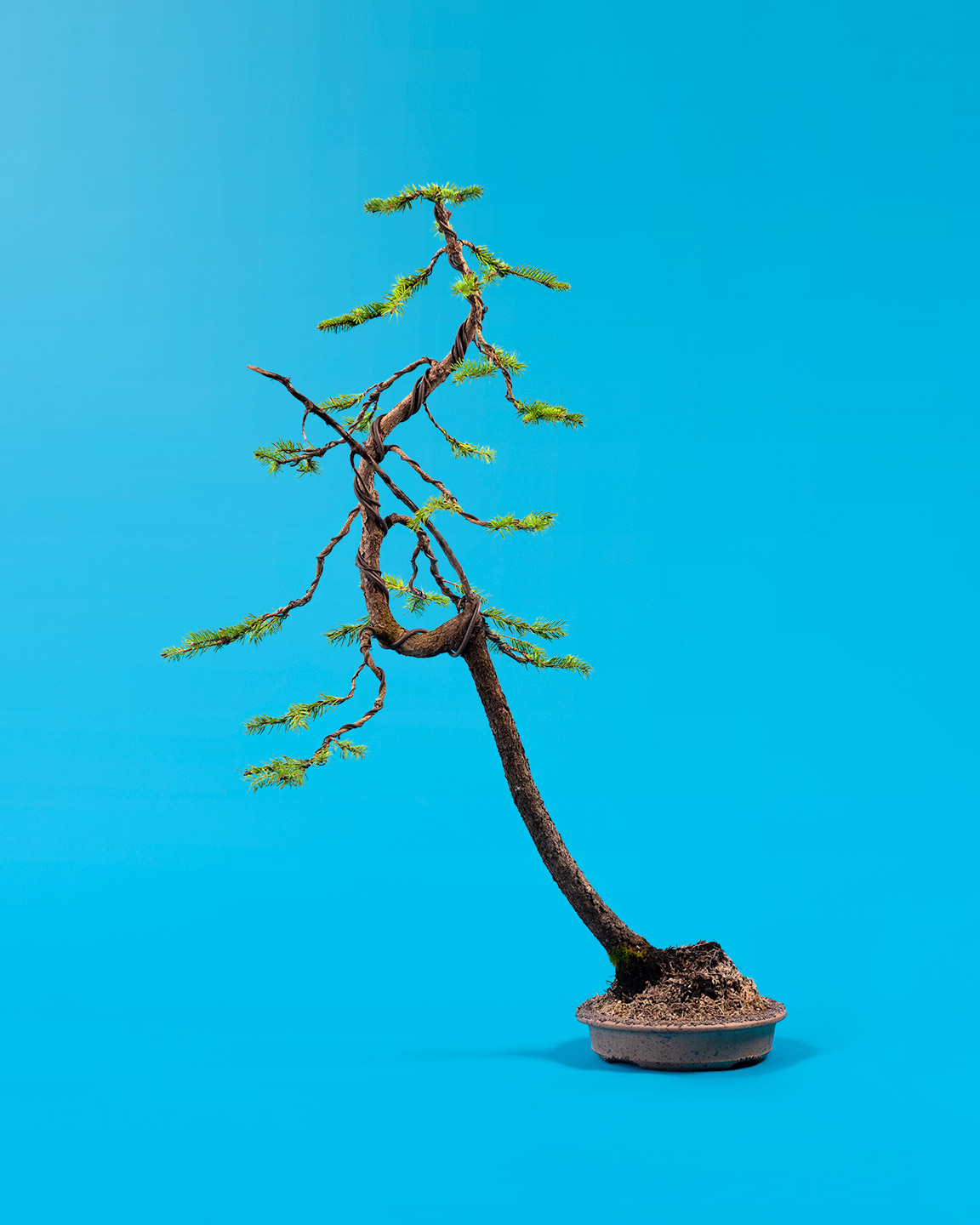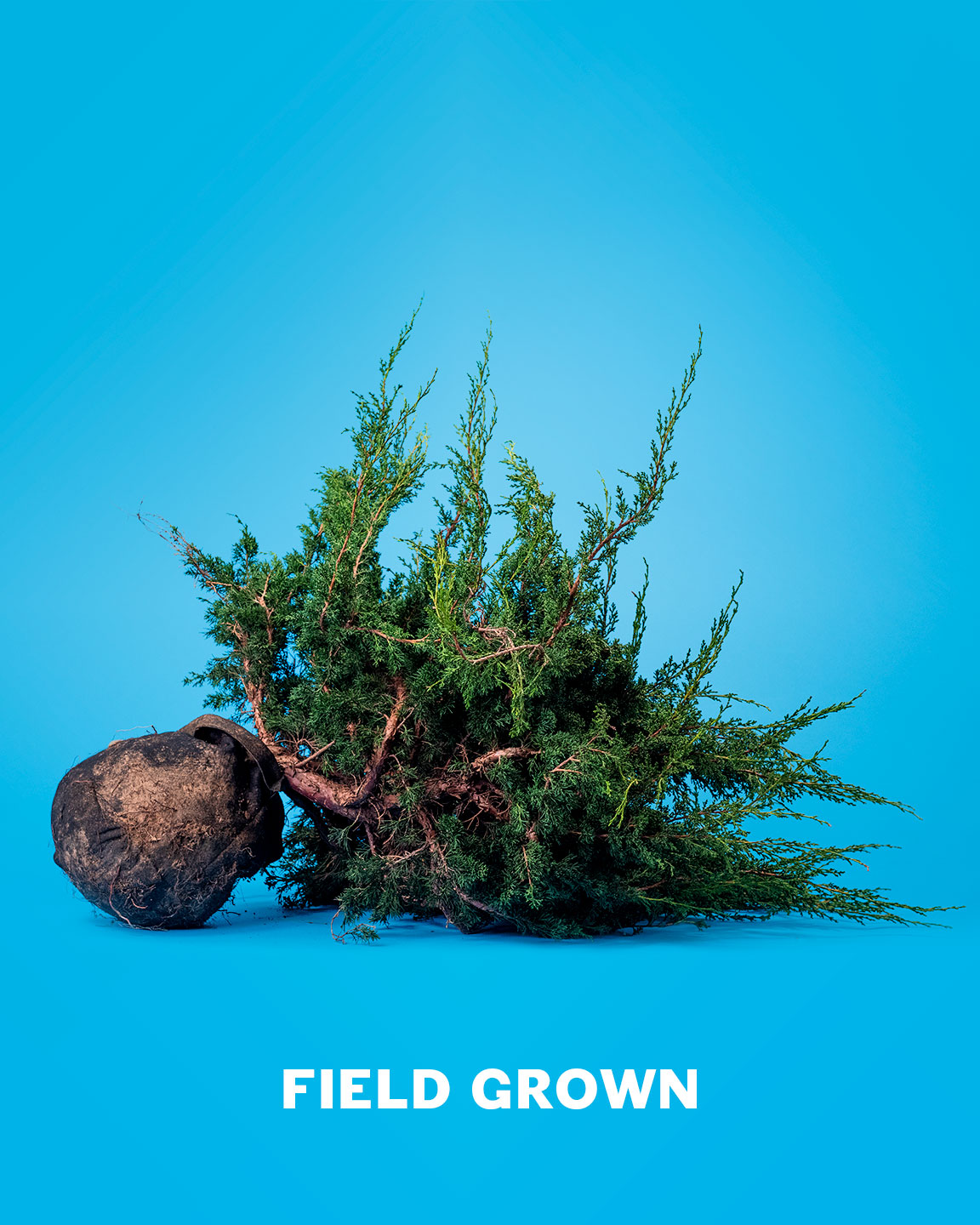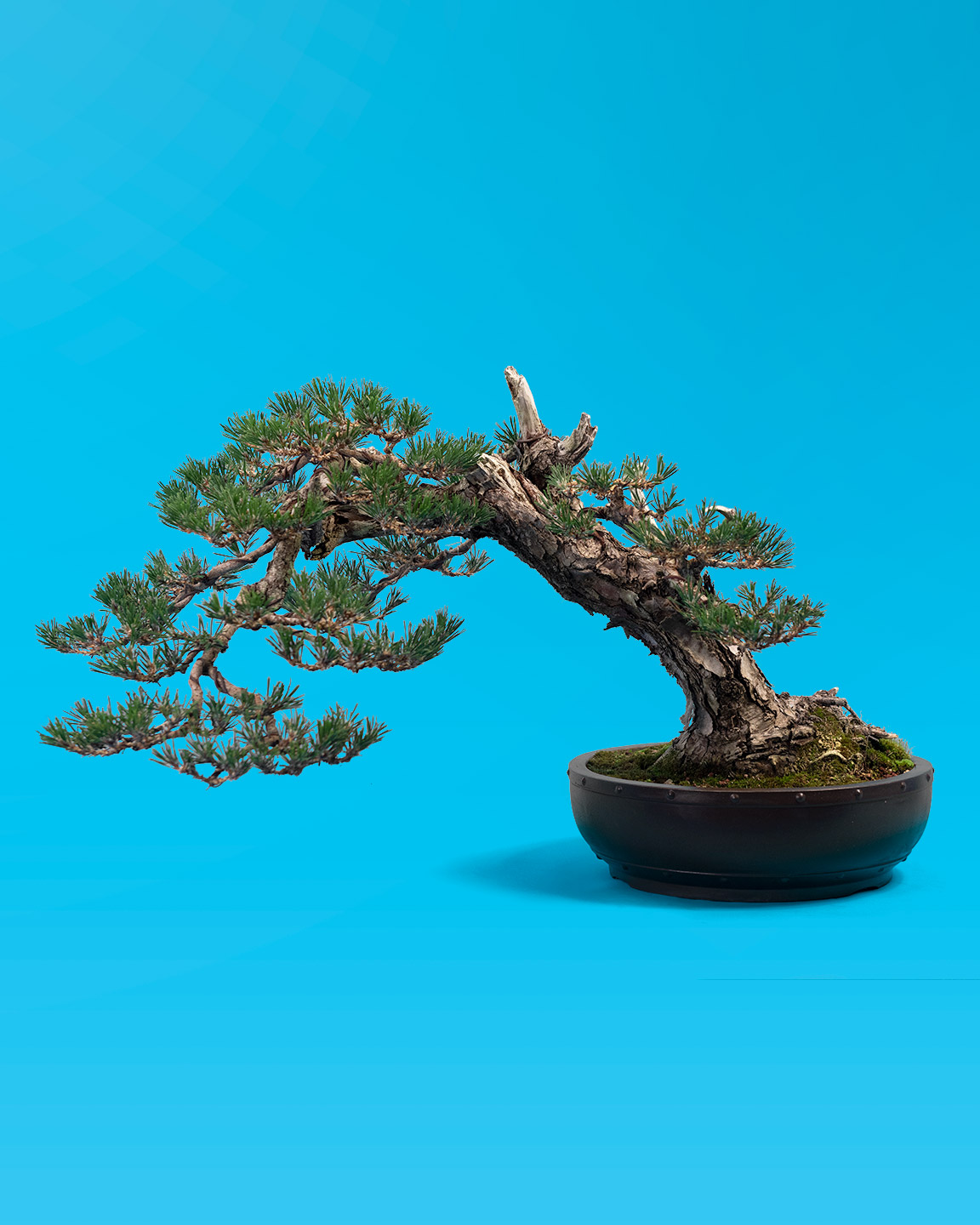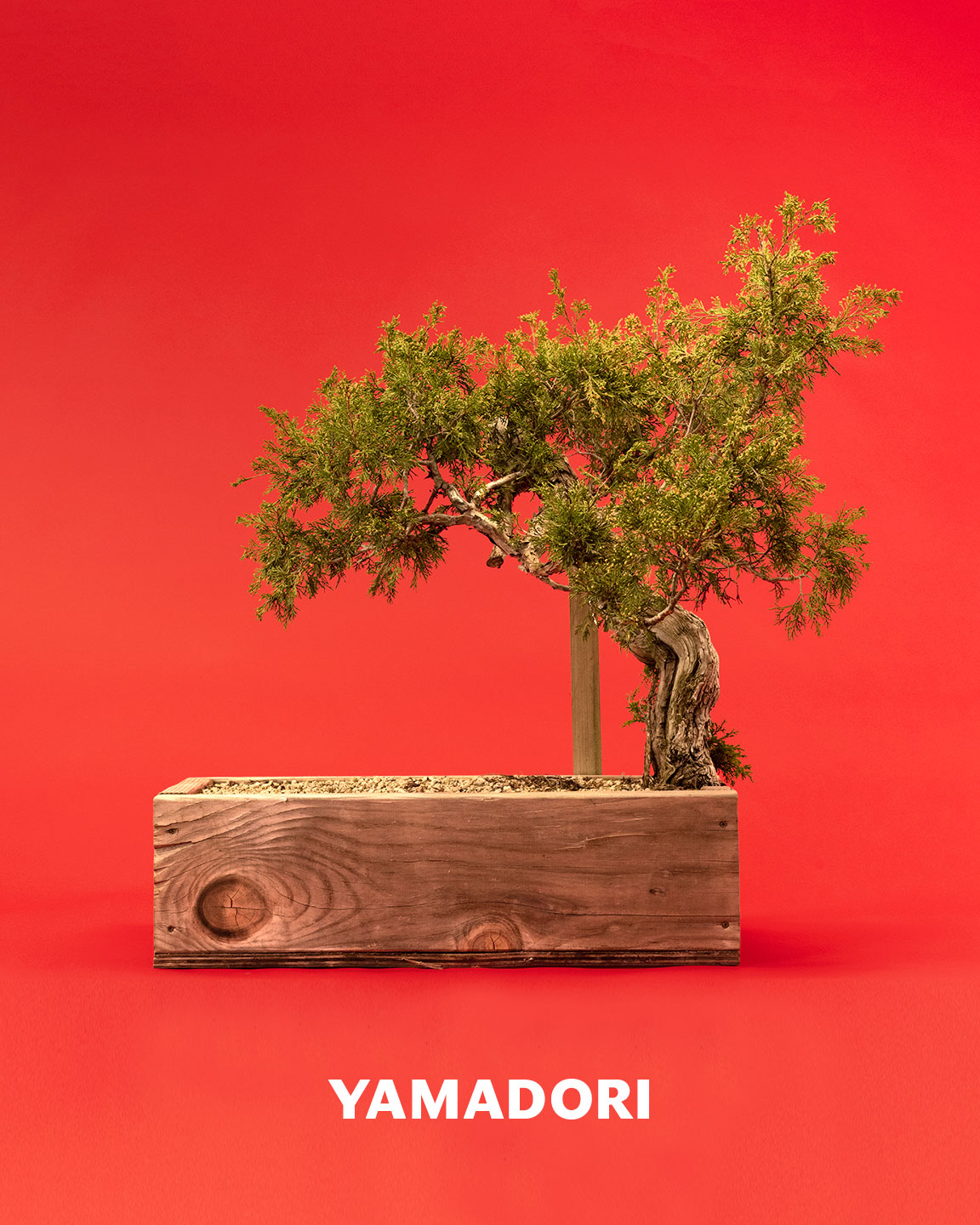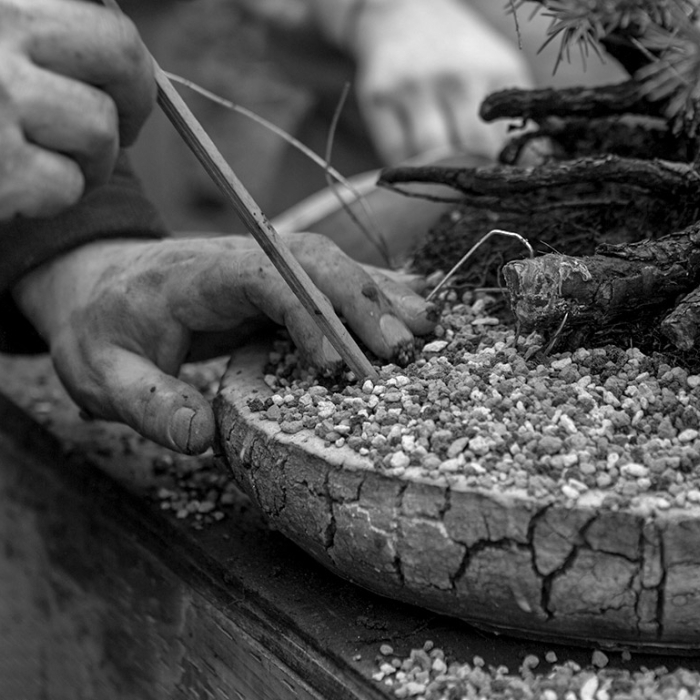From seed to field to mountaintop
If you havent immersed yourself in bonsai, your exposure to the artform may be limited. It might come as a surprise that bonsai trees come from many different sources; some are grown from seed, destined to be bonsai from the moment they sprout from the soil. Some are field-grown and some are even collected from wild mountaintops.
These varying bonsai origins provide you varying results, offering a wide berth of design opportunities to reflect nature in miniature based on your patience, technique, and economic commitment. No one source is categorically better than the other. While there are biases, as with any artform, all avenues are necessary to explore because they all result in different bonsai characteristics that can enhance your composition. Knowing how to use a field grown tree versus a yamadori is the mark of an elevated practitioner, one who uses the characteristics of the tree to guide their design process.
Seedling
We all remember that 4th-grade science class, where you stuff a bean into some soil, wait a few days or weeks, and marvel at the magic conjured by a little water and sunlight. Trees begin in this same humble way –a seed lands into soil and with the right conditions, germinates, continuing to bravely push up a single sprout on its long skyward journey from the forest floor to the high canopies.
Technically most bonsai, and almost all trees for that matter start as seeds, brimming with potential. But in the bonsai world when people refer to seedlings as bonsai material, they are referring to trees that have been under man-made direction and care from the moment they were first plopped into a soil tray. These seeds are germinated, and seedlings cared for with the intention of growing them as bonsai, hence they are treated very differently from regular trees propagated in the nursery industry.
"It might come as a surprise that bonsai trees come from many different sources; some are grown from seed, destined to be bonsai from the moment they sprout from the ground."
With seedlings, you have the maximum amount of control – with climate, pruning, fertilization, soil composition, directional wiring –all the contributing factors to the visual characteristics of a tree. And yet that omniscient relationship comes at the cost of time, seedlings can take anywhere from 15-20 years on average to be developed into show-worthy bonsai. You are in it for the long-haul, but the results can border on perfection, something bonsai fanatics ogle.
It could be argued that most of the world’s “perfect” bonsai, in the traditional sense, are grown from seedlings, because nature would never produce such a balanced, proportional, cohesive tree. Nature is wrought with asymmetry, randomness, mishap, damage, and death. Seedlings are the chosen ones, plucked from nature’s caprice and nurtured in a bubble.
A telltale giveaway that a bonsai was grown as a seedling is 360 degree radial distribution of the roots – that scrumptious nebari flaring fully around the base of the tree. Bonsai nerds know what I’m talking about and are most likely salivating at the thought, the wish, the distant hope that one day, one of their trees might dare to showcase radial root distribution. If this sounds true to home for you, and you get hyped on that perfect, traditional bonsai form, go get some seeds my friend and a good book, because it’s gonna be awhile.
Cutting
Simply put, a cutting is exactly what is sounds like. You can cut long pieces of growth off of already established plants from which you can propagate trees to be bonsai. Cuttings are great because you can experiment with lots of different species, across varying conditions, with little to no economic risk.
While it’s not as simple as cut anything and it will grow, with a little research and practice, anyone can utilize the cutting method with success. If all goes well, one can grow a healthy, lovely bonsai in roughly 10-12 years – cutting down on time significantly compared to a seedling, but still not a quick process.
You want to look for a vigorous piece of growth on a landscape bush, a tree, a bonsai, anything really –and if it’s the right season and the right tissue density depending on the species, you can wire it up, make a clean cut, and put it into soil where roots will emerge from the cut-site.
The characteristics cuttings display in fully-formed bonsai is typically radical trunk movement. One of the advantages to starting bonsai from a cutting is that you can wire insane twists and turns into the whip, or piece that you will cut, and have little fear about root damage.If you attempted to radically wire a rooted tree like you can a cutting, you would see adverse affects from the contortion.
Similar to seedlings, with cuttings you typically have a great amount of control over how the bonsai will turn out. From the trunk movement you define with your wire before you cut, to the growing process that ensues in the years to come, cuttings are an incredible mechanism for learning the in’s and out’s of horticulture, and methodically testing various techniques to cultivating bonsai stock.
Nusery Stock
You’ve caught the bug. You want to get your hands on some scissors and wire and make a bonsai Right. Now. Better head to your local nursery my friend, for this is the surest and quickest method to getting your hands on a tree with bonsai potential without knowing a field growing operation or dropping in on a collected tree.
Nursery stock are grown by non-bonsai-oriented folks with the intention of one day planting them in a grand landscape or in someone’s backyard. At the nursery, you’re up against a sea of seemingly identical material that you must sort through in order to identify trees with bonsai-potential.
With good nursery stock, you can develop a wonderful bonsai within 5-10 years, seriously cutting down on time compared to seedlings and cuttings. What you exchange for time is control – with nursery stock you have to ‘go with what you got’ in essence, which is why selection is so important.
"At the nursery, you’re up against a sea of seemingly identical material that you must sort through in order to identify trees with bonsai-potential."
Here’s what to look for: a good base – you want to look for a wide, solid base that gives visual stability to the tree; a nice, natural line, a line that occupies various angles, spaces, and planes and showcases the trunk movement; and finally, you want to identify a ‘special feature,’ something that makes this piece of material stand out from the hundreds of others, something that could elevate a bonsai design.
Let’s be frank, with nursery stock, you are usually trying to make a bonsai out of a bush, but there are certainly some telltale characteristics of nursery stock that can be amazing in bonsai design. You can find those instances of ‘human blight’ – tractors running over it, half the tree died off due to irrigation trouble, it could have been horribly pruned –the innumerable mishaps of cultivating trees in a nursery industry that can have unique results for bonsai material that someone growing a tree from seed or a cutting could not have reproduced.
Nursery stock are typically grown in a container their whole lives; they grow slower and thinner. So you can see signs of age on a tree that isn’t very thick, which can make for amazing forest or literati compositions in bonsai. Making great bonsai out of nursery stock really comes down to the practitioner’s bag of tricks, so to speak. If you can spot good material and keep your mind open to unexpected design opportunities, anyone can utilize nursery stock to create impressive bonsai.
Field Grown
A common technique for growing thick, powerful bonsai is field growing. Once seedlings and cuttings outgrow their liners, they can be planted in the field to set their growth into hyperspeed. In the ground, the trees thrive – you can get thick, robust growth in a relatively short period of time.
The telltale characteristics of field-grown material are massive trunks and branching. But there isn’t really a guidebook on the best way to go about field growing bonsai material. Every grower has their own techniques they swear by – some use a grow bag, some let the roots run, some use wire, some only directionally prune.
The final product – with movement, girth, amount of scarring, dieback, health of roots, etc - is incredibly dependent on the skill and technique of the field grower. And it is a lifelong pursuit to harness an effective, efficient field growing process. So once you find a good field grower, don’t lose their number.
"In the ground, the trees thrive – you can get thick, robust growth in a relatively short period of time."
Yamadori
Yamadori, also known as collected material, are trees sourced from the wild. Yama means ‘mountain’ dori means ‘dug’ – so quite literally yamadori translates to dug from the mountains.This is the bonsai material that is quite possibly the most sought after, because nature has done the work of imprinting a visual language that reflects an environment for you.
Collectors will venture into the vast wilderness in search of the environmental conditions that produce stunted trees – rocky substrates, low moisture, high wind, heavy snowfall, swamps, bogs, abnormal precipitation, anaerobic environments, high acidity, dense soils, etc. It could be any environmental condition that seriously reduces growth, giving the tree just enough to barely survive, and resulting in the rich character of deadwood, movement, and capacity for storytelling that bonsai practitioners look for.
Once collectors find a tree with the right characteristics and they know they can get enough roots to keep the tree alive, they dig it, initiating a risky process of time, technique, and care. Simply getting trees to survive the collecting process is incredibly difficult, because they are inherently sick. You have these trees growing in extreme environments, staying small yet somehow alive – if they were robustly healthy they would grow 80 feet tall.
So collectors attempt to extract trees clinging to survival with delicate root systems, keep it all intact, transport it, and then start the process of guiding it towards some semblance of health so that it can undergo the work bonsai demands. It is an intense process, demanding unremitting patience and an understanding that failure is inevitable.
Some call working with yamadori the purest form of bonsai. The first iterations of bonsai, when the Chinese began practicing penjing, were born out of a desire to take the lessons reflected in nature and work with trees as a form of Buddhist practice. As the art expanded to Japan, the technique and artistry was elevated by the influence of wabi-sabi, or beauty in the imperfection.
The Japanese used yamadori bonsai to explore and glorify the wonderful, orchestrated chaos produced by nature. Collected material is not contrived, pruned by a human to look like nature’s hand – it has been carved by pure survival in decades or centuries in the most unforgiving environments.
"As with any bonsai, but especially with yamadori, you can use it to truly reflect an entire landscape and all of its containing elements – the wind, the sun, the snow."
The value of yamadori lies in its age, and the visual tale of struggle. What draws you into yamadori typically is the awe of mere survival. You see this contorted composition, with deadwood, jins, and shari, and you can’t help but marvel at the will to continue existing, despite all odds. As with any bonsai, but especially with yamadori, you can use it to truly reflect an entire landscape and all of its containing elements – the wind, the sun, the snow.
The inherent wildness and limitless design opportunities with collected trees is what attracts bonsai practitioners. However, this material is physically older, by hundreds or thousands of years, more expensive, again by hundreds or thousands of dollars, and require the most technique to be successful.
And while there may be biases towards yamadori as the pinnacle, the truth is that each material source has its merits and opportunities for you to expand your bonsai skills, learn the horticulture, play with design, and enjoy the process.
A true artist should be able to make a bonsai out of anything, from nursery stock to rogue yamadori – it is up to you to interpret the characteristics in the tree, fluidly meld and enhance them with your design, and work with what you are given to create unique compositions.
Learn how to work with the many types of bonsai material on Mirai Live.
